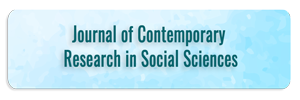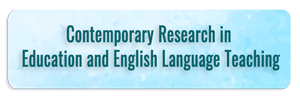Instructions for Authors
Submissions must be unique and should not have been published earlier or be under consideration for publication while being evaluated for this Journal. Learning Gate journals are committed to publish quality and valuable scientific contributions to our journals.
Types of Articles could be submitted
- Original articles
- Research articles
- Reviews articles
- Mini-reviews
- Case report
- Commentaries
- Editorials
- Letter to Editor
- Short reports
Word Processing Formats
The following word processor file formats will be accepted for the manuscript document for all the Learning Gate journals.
Microsoft Word 2007 to 2018(docx)
Organization of Manuscript
The authors may please ensure that the length of their manuscript is between 15 and 25 pages. Learning Gate will accept longer manuscript.
The manuscript should contain the items mentioned here under.
- Cover Letter
- Title & List of authors
- Keywords
- Abbreviations
- Introduction
- Abstract
- Materials & Methods
- Results & Discussion
- Conclusion
- Acknowledgements (optional)
- References
- Figures
- Preparation of Tables
Manuscripts could be submitted of following format
Cover letter
While submitting the manuscript author is requested to provide cover letter along with the manuscript. This cover letter should include manuscript title, name of the co-authors if any and full contact details of the corresponding author with office or institutional address, telephone, fax and email address. Corresponding author should clearly state the approval of co-authors for manuscript submission along with any competing interests. It is also strongly advised to declare that work is original and not submitted/ published elsewhere with other publishers. Finally, if this submission is submitted upon the invitation of an Editorial Board member/ Editorial office please provide the details. Author could also include any additional information in the cover letter that helpful to the Editorial office.
Title and Authors Information
In “Title and Authors Information” part, the following information should be included
- Paper title/ Manuscript Title
- Complete author names, including Co- authors names also
- Complete institutional mailing addresses
- Email addresses
Keywords
Please provide 4 to 10 keywords as index terms signifying the article content.
Abbreviations
Abbreviations are the spelled out terms in the text for the first time and used consistently thereafter.
Introduction
This section should be concise, with no subheadings.
Abstract
It should be written using the following algorithm: first two or three sentences indicate the relevance of the topic; the aim and object of the study; the methodology (methods) of the study (for theoretical studies – its theoretical basis) is described; the obtained results and their practical value are characterized. At the same time, every statement must follow logically from the previous one. In the abstract for a research paper, it is recommended to use the numerical results. In the abstract of a review paper, the author can only point the issues discussed, without presenting the results. While writing the abstract, it is necessary to use the active voice instead of the passive voice, and such words as “thus”, “for instance”, “as a result”, etc. In the abstract, the author should not refer to any researches or other sources of information. The abstract should be written without subsections and without subtitles, i.e., is not structured. The text should be concise and original. It is not appropriate to use the sentences in the Abstract from the text of the paper. At the same time, the material which is absent in the paper cannot be presented in the Abstract. In the Abstract, the author should not refer to any sources, use tables and figures. The number of words must be in average 200-250.
Materials and Methods
This section should contain adequate detailed information what all the procedures and steps followed. It can be divided into subsections if several methods are described.
Results and Discussion
In this section should be described on results and out puts of the research work.
Conclusions
This should clearly explain the important conclusions of the work highlighting its significance and relevance.
Figures
Upon submission of an article, authors are supposed to include all figures and tables in the PDF/ Word file of the manuscript. Figures and tables must be submitted in individual files. Figures should be labelled below the figure.
Preparation of Tables
Each table must have a descriptive title and if numerical measurements are given, the units should be included in the column heading.
References
Common types of references include: journal/periodical articles, books, conferences,
websites/online resources. For more reference types refer to APA Formatting and Style Guide.
Journal articles
Note: It is MANDATORY to include a DOI if it has been assigned to a journal article.
Author, A. A., Author, B. B., & Author, C. C. (Year). Title of the article. Journal Title, Volume(Issue), Firstpage-Lastpage. https://doi.org/prefix/suffix
Note: if there is more than one author, the last author’s name should be preceded by the comma and the ampersand.
Rudchenko, V., Martin, J. C., & Sánchez-Rebull, M. V. (2017). Bibliometric analysis over research on “client satisfaction”. Problems and Perspectives in Management, 15(1), 99-https://doi.org/10.21511/bbs.12(1).2017.10
Note: if article doesn’t have a DOI, please insert the URL from which an article can be retrieved
Olgiati, S., & Danovi, A. (2015). Credit risk management and cyclicality of bank lending to nonfinancial orporations in Italy during the financial crisis: 2008-2012. A modeling study. Problems and Perspectives in Management, 13(2), 7-14. Retrieved from https://businessperspectives.org/journals/problems-and-perspectives-inmanagement/issue-46/credit-risk-management-and-cyclicality-of-bank-lending-to-nonfinancial-corporations-in-italy-during-the-financial-crisis-2008-2012-a-modeling-study
Books
Books without editors
Author, A. A. (Year). Title of work: Capital letter also for subtitle. Location: Publisher.
Badham, R. J. (2013). Short change. An introduction to managing change. Sumy: Business Perspectives.
Books with editors
Author, A. A., & Author, B. B. (Year of publication). Title of chapter. In A. A. Editor & B. B. Editor (Eds.), Title of book (pages of chapter). Location: Publisher.
Buffery, A., & Buffery, E. (2009). World financial crisis: Causes, effects and Australian response.
In S. Kozmenko & T. Vasil’eva (Eds.) World financial crisis: Causes, consequences, ways of overcoming (pp. 65-82). Sumy: Business Perspectives.
Conference proceedings
Author, A. A., & Author, B. B. (Eds.). (Year of publication). Proceedings from: Name of the conference. Location
Schnase, J. L., & Cunnius, E. L. (Eds.). (1995). Proceedings from: The First International Conference on Computer Support for Collaborative Learning. Mahwah, NJ
Dissertation/Thesis
Author, A. A. (Year). Title of dissertation. Retrieved from Name of database. (Accession or Order Number)
Obravyt, V. (2016). Comparative analysis of internal and external national debt of Ukraine taking into account the impact factors. Retrieved from ProQuest Digital Dissertations. (AAT 3295214)
Website and Online Resources
Author (Name of the organization). Title of the webpage. Retrieved from: http://...The World Bank (2015). Gross enrolment ratio, tertiary, both sexes (%). Retrieved from http://data.worldbank.org/indicator/SE.TER.ENRR
Acknowledgments
All acknowledgments (if any) should be included at the extremely end of the manuscript prior to references part. This section may include supporting grants, presentations, and so forth.
Article Withdrawal Policy
The articles submitted to Learning Gate Journals can be withdrawn either by the submitted authors or the publisher. The article can be withdrawn anytime before it is published officially on the journal page with detailed information on volume. Issue, page numbers etc. If the authors wants to withdraw the article, we insist for a signed statement from the all the co-authors to journal’s editorial office via mail. If editorial office/ publisher find any violation in publishing ethics, guidelines, duplicate submission, plagiarism, etc., publishers holds the right to with draw/ reject the manuscript at any stage of publishing process.
Refund Policy
Learning Gate Journals will not offer refunds for Open Access once articles have been published/ withdrawn.




